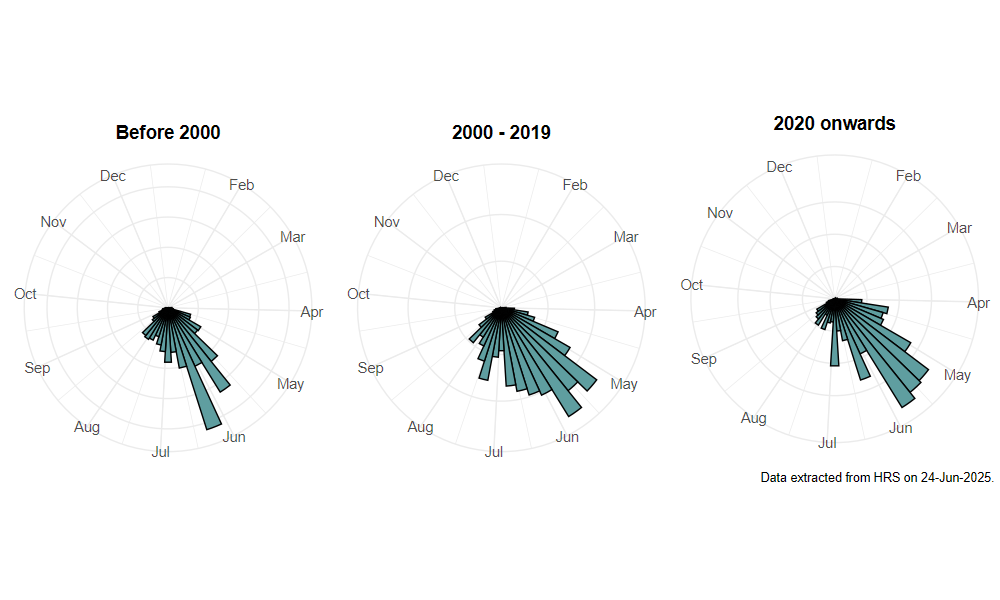Chalcosyrphus nemorum (Fabricius, 1805)
Identification
Identification difficulty = 3. ![]()
![]() according to Ball & Morris, 20241
according to Ball & Morris, 20241
Synonymy
Xylota nemorum (Fabricius, 1805) in Coe(1953)2, Xylotomima nemorum (Fabricius, 1805) in Kloet & Hincks (1976)33.
Biology
This species is generally found in wet, wooded situations, but adults can also occur on sunny vegetation at the edges of woods and along rides. They may be regular visitor to buttercups Ranunculus sp. and other yellow flowers. The larva is found in accumulations of sap under the bark of roots of water-sodden, dead standing trees and fallen trees or branches lying in water. A wide range of tree species are utilised.
Flight period
The following plots show the number of unique records per week excluding those reported to be of immature stages.

Distribution
This is primarily a lowland species. It is widely distributed south of a line between the Ribble and the Humber, becoming scarcer northwards. Records extend as far north as Sutherland.

Trends
The following plots show the Frescalo TFactor vs year and a map of the rescaled frequency (all records) for the species.
-
Ball, S., & Morris, R. (2024). Hoverflies of Britain and Ireland. WILDGuides (3rd ed.). Oxford: Princeton University Press. ↩
-
Coe, R. (1953). Diptera: Syrphidae. Handbooks for the Identification of British Insects, 10(1), 1–98. ↩
-
Kloet, G., & Hinks, W. (1976). A check list of British insects. 2nd Ed. Part 5: Diptera and Siphonaptera. Handbooks for the Identification of British Insects, 11, 1–139. ↩ ↩